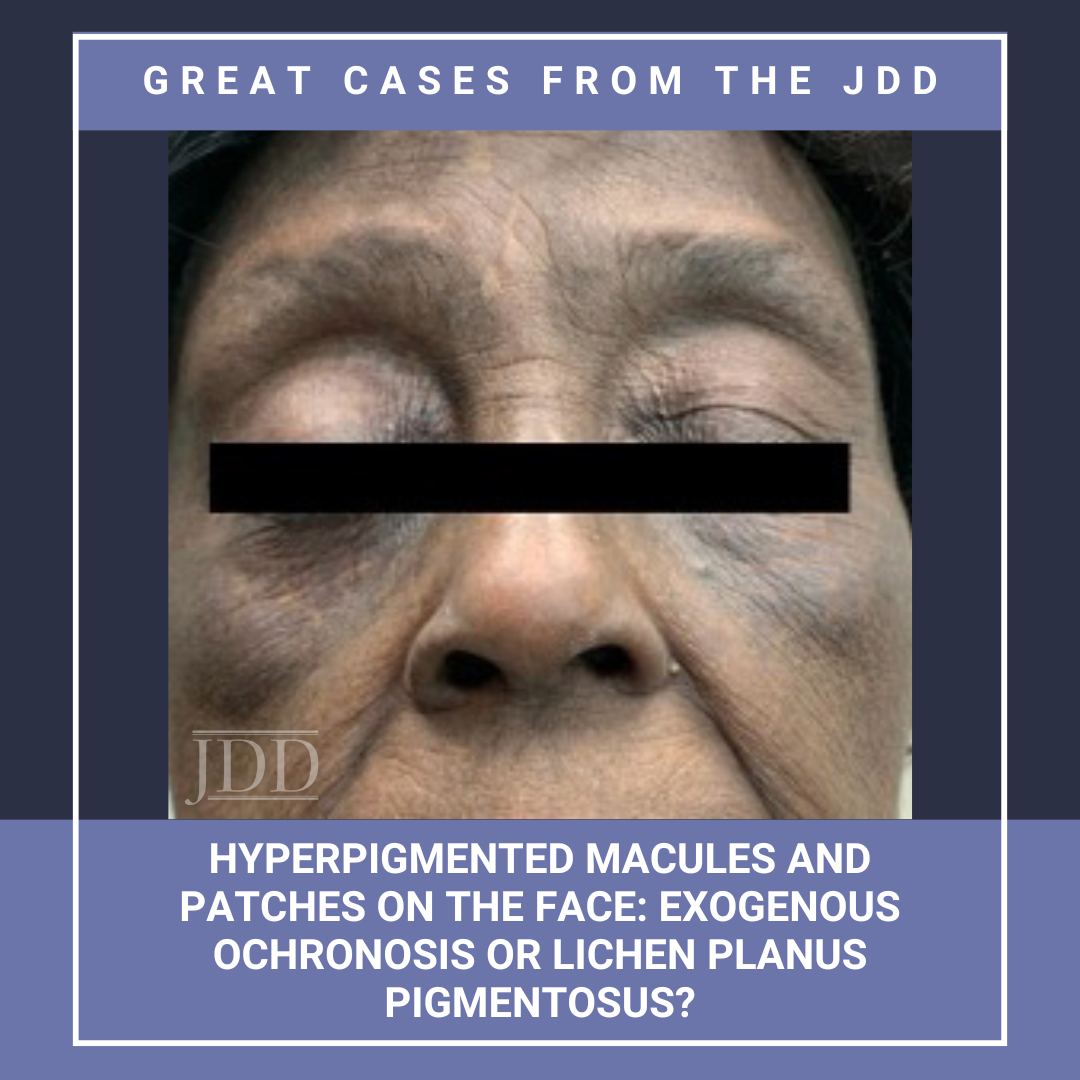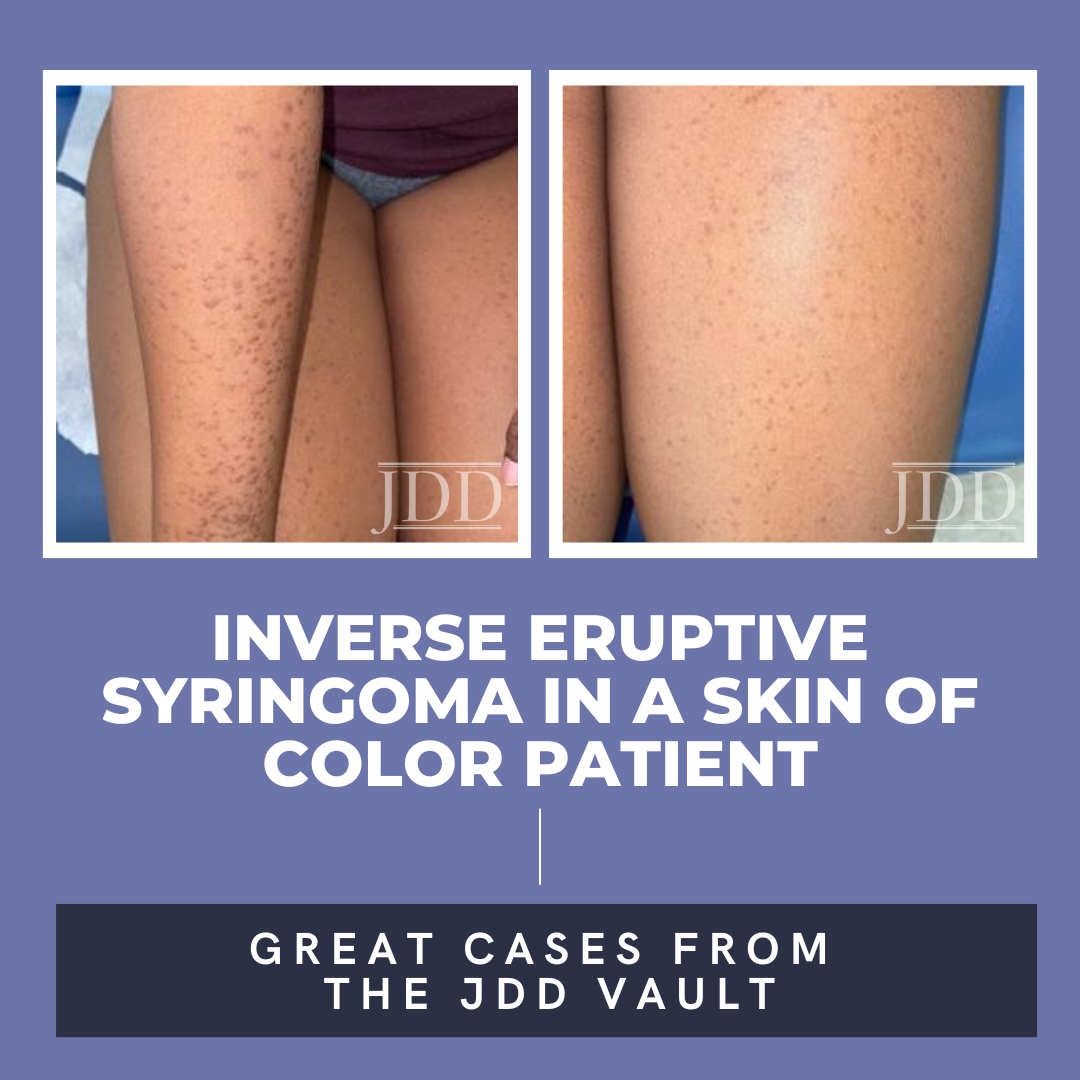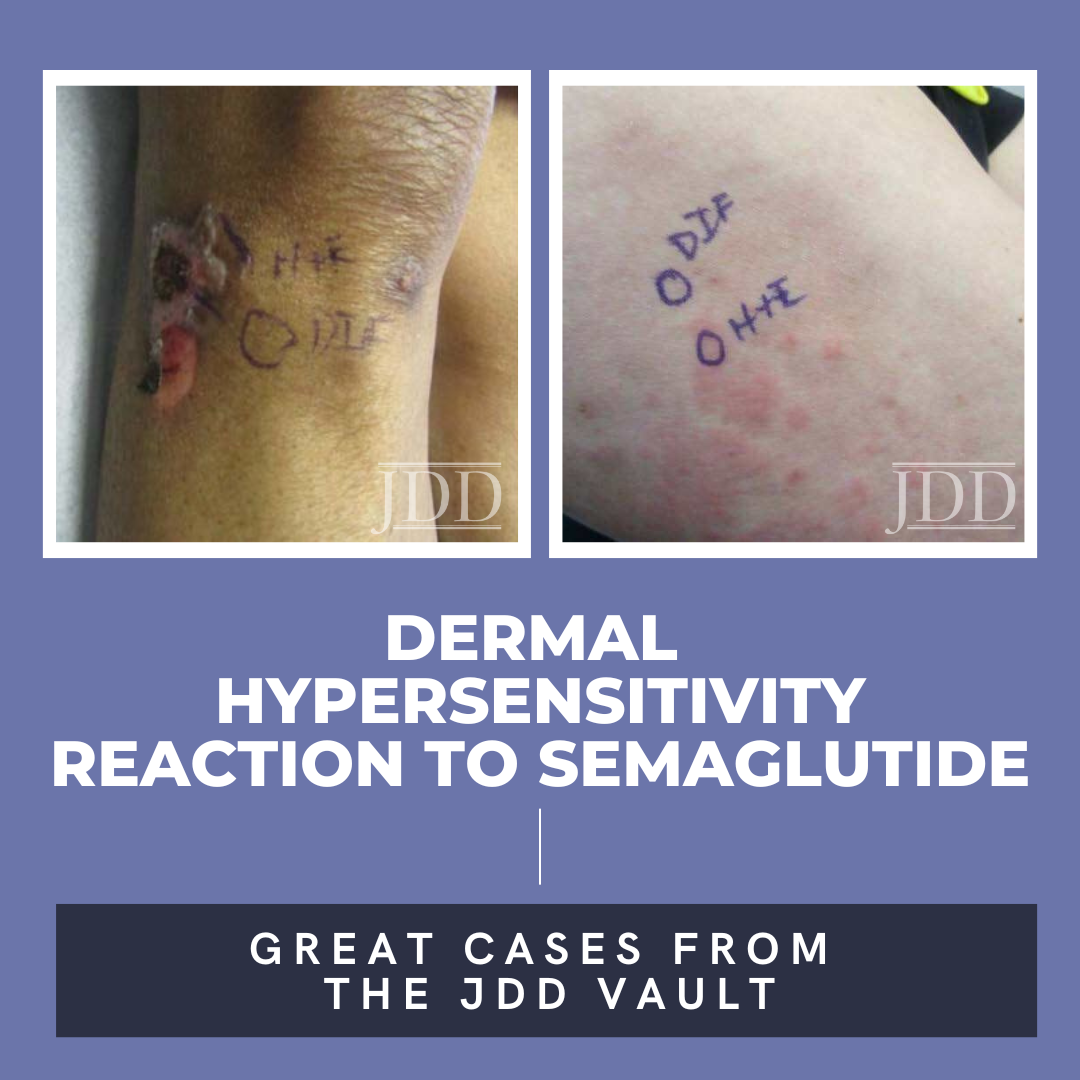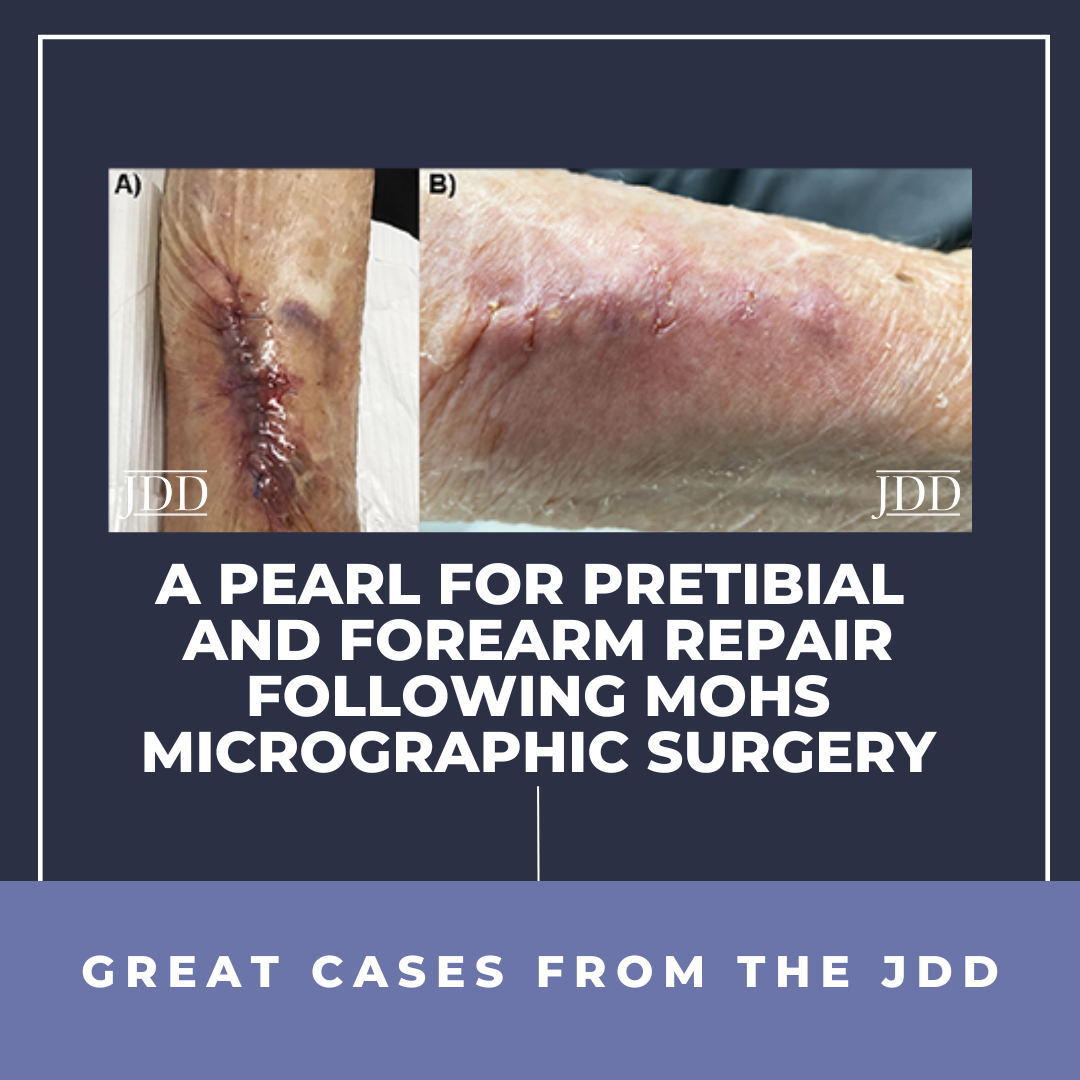Hyperpigmented Macules and Patches on the Face: Exogenous Ochronosis or Lichen Planus Pigmentosus?
 JDD authors Deepika Narayanan, MD and Stephen K. Tyring, MD, PhD, MBA present a case of a patient with a 10-year history of blue-black macules and patches on the face and an associated history of skin- lightening cream usage. The skin lightening cream contained hydroquinone, which is often associated with exogenous ochronosis (EO). Interestingly, the biopsy did not show characteristic findings of …
JDD authors Deepika Narayanan, MD and Stephen K. Tyring, MD, PhD, MBA present a case of a patient with a 10-year history of blue-black macules and patches on the face and an associated history of skin- lightening cream usage. The skin lightening cream contained hydroquinone, which is often associated with exogenous ochronosis (EO). Interestingly, the biopsy did not show characteristic findings of …
 JDD authors Deepika Narayanan, MD and Stephen K. Tyring, MD, PhD, MBA present a case of a patient with a 10-year history of blue-black macules and patches on the face and an associated history of skin- lightening cream usage. The skin lightening cream contained hydroquinone, which is often associated with exogenous ochronosis (EO). Interestingly, the biopsy did not show characteristic findings of …
JDD authors Deepika Narayanan, MD and Stephen K. Tyring, MD, PhD, MBA present a case of a patient with a 10-year history of blue-black macules and patches on the face and an associated history of skin- lightening cream usage. The skin lightening cream contained hydroquinone, which is often associated with exogenous ochronosis (EO). Interestingly, the biopsy did not show characteristic findings of … 

 INTRODUCTION
Melanoma accounts for only 1% of all skin cancers but is responsible for most skin cancer-related deaths.1 Acral and mucosal melanoma (AMM) accounts for only 4% of all new melanomas but is associated with poorer prognosis.2 Patients of color are disproportionately affected by AMM. Elucidating the clinical, genetic, and environmental features of AMM can guide advancements in the …
INTRODUCTION
Melanoma accounts for only 1% of all skin cancers but is responsible for most skin cancer-related deaths.1 Acral and mucosal melanoma (AMM) accounts for only 4% of all new melanomas but is associated with poorer prognosis.2 Patients of color are disproportionately affected by AMM. Elucidating the clinical, genetic, and environmental features of AMM can guide advancements in the …  Syringomas are benign neoplasms derived from eccrine sweat glands. Eruptive syringomas are a subtype of syringomas and are typically located on the chest, neck, and abdomen during puberty or childhood. Herein, JDD authors Jennifer Wang BA, Nyousha Yousefi MD, Edward Heilman MD FAAD FCAP, and Jared Jagdeo MD MS present a 20-year-old African American female with an atypical case of eruptive syringom …
Syringomas are benign neoplasms derived from eccrine sweat glands. Eruptive syringomas are a subtype of syringomas and are typically located on the chest, neck, and abdomen during puberty or childhood. Herein, JDD authors Jennifer Wang BA, Nyousha Yousefi MD, Edward Heilman MD FAAD FCAP, and Jared Jagdeo MD MS present a 20-year-old African American female with an atypical case of eruptive syringom …  Semaglutide is a glucagon-like peptide-1 (GLP-1) analog that was FDA-approved in 2017 for treatment of type II diabetes and in 2021 for treatment for chronic weight management in adults with obesity or overweight with at least one weight-related condition.1 Due to its longer duration of action, it is typically administered subcutaneously once weekly. The safety profile of semaglutide is similar to …
Semaglutide is a glucagon-like peptide-1 (GLP-1) analog that was FDA-approved in 2017 for treatment of type II diabetes and in 2021 for treatment for chronic weight management in adults with obesity or overweight with at least one weight-related condition.1 Due to its longer duration of action, it is typically administered subcutaneously once weekly. The safety profile of semaglutide is similar to …  Wound repair of the pretibial and forearm regions presents a challenge during dermatologic surgery as these areas are under significant tension and exhibit increased skin fragility. Various methodologies have been proposed for the closure and repair of such wounds, however, the use of the bilayered suture technique may be simpler and more effective than other techniques such as the pinch stitc …
Wound repair of the pretibial and forearm regions presents a challenge during dermatologic surgery as these areas are under significant tension and exhibit increased skin fragility. Various methodologies have been proposed for the closure and repair of such wounds, however, the use of the bilayered suture technique may be simpler and more effective than other techniques such as the pinch stitc …